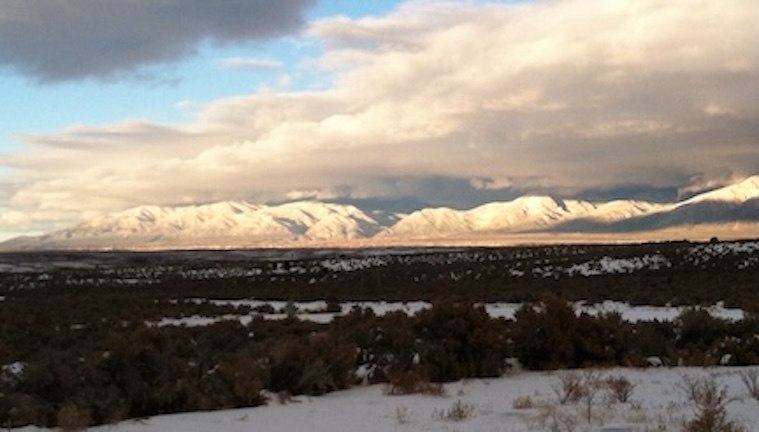It didn’t take long to fill the condo we were renting in Taos with what had been in the house we once owned in Worthington. The stucco-covered condo was one of four units, occupied by nice neighbors, including a sci-fi writer. Our temporary home was a short walk to the Plaza, the town’s center.
Settled in, we explored Taos and what was beyond the town. Living at 7,000 feet — we were at around 1,400 in Worthington — was a challenge that noticeably impacted my sleep and any hiking due to the reduction in oxygen. But I so enjoyed the big blue sky during the day, and at night, stars that shown over us like a gems. (New Mexico has a dark sky ordinance that requires outdoor lights to shine downward.) Buildings were covered by stucco, lots of pinks, except for the many mobile homes, a big change from those in the hilltowns. Plus, here was an area with a far different history and culture than New England’s.
Did we miss our former home? Of course, and certainly our family. It would be the first time we wouldn’t share Thanksgiving dinner with our kids, or Christmas. We had left behind a town where we had lived for 25 years and had known so well. Could we make it here in the Southwest? We hoped so.
But we weren’t tourists or trust funders, and we couldn’t afford to live like them for long. We needed a permanent home and an income. Both happened rather quickly.
When we came on an earlier visit to find a place to rent, we had success when we met Bonnie at a property management office in town. Bonnie was the one who turned us onto the condo. So, in thanks we invited her to dinner after we had settled. Could she bring her partner, Beau? Of course. (Both remain our friends.)
Over dinner, we learned that Beau had a business that built energy-efficient houses. The exterior walls were pumice-crete — a mixture of pumice and concrete poured in forms — and covered by stucco. The homes often had trombe walls, that is, large plates of thick glass covering cement blocks painted black on the south side of the house that absorbed sunshine during the months it was needed. (More about this later.)
He also had a piece of land, a building lot, he wanted to sell on the outskirts of Taos proper in an unincorporated area.
Let me back up here, Taos County has four incorporated towns: Taos, Questa, Red River, and Taos Ski Valley. The rest of the county’s land is unincorporated, which commissioners oversee, except for Taos Pueblo, which is a sovereign nation. Within that unincorporated area, there are villages such as Ranchos de Taos and Peñasco. Then there are those hardy types living on the mesa in what are called Earthships, off-the-grid homes made of tires and bottles, plus far funkier dwellings.
We met Beau to look at the piece of land located on Adams Road, a sparsely settled dirt road that had an immense open view of the sage brush-filled mesa and the mountains beyond. The winter photo above will give you an idea. The Rio Grande’s canyon could be accessed on the paved road that brought us here. The lot came with a well we would share with whoever built on the adjacent lot. Electrical power could be accessed from an underground line — no telephone poles here. The price was affordable, and better yet, Hank could work on Beau’s crew on the current house he was building. Construction of our house wouldn’t start until next spring.
Also, at the same time, I was hired to sell art at Total Arts Gallery. The gallery, which closed after we left Taos, sold high-end oil paintings, water colors, and sculptures. I have to admit selling is not my thing, but I so enjoyed taking potential customers around the gallery and being immersed in art. Keep in mind that in 2006 the country was heading toward a recession. Buying art wasn’t on top of people’s minds, so I was grateful for those I convinced to bring a piece back home.
It was also at this time I started writing freelance articles for The Taos News, an award-winning weekly. Gerald, the editor then, assigned me mostly feature stories. It meant having a toe in the door, as months later I became the newspaper’s copy editor, and months after that, it’s editor-in-chief, a rewarding experience that had its challenges, mostly dealing with people in power who criticized our coverage and the editorials I wrote — ha, no regrets there. Yes, I will be telling you a lot more about that in future En Taos posts.
